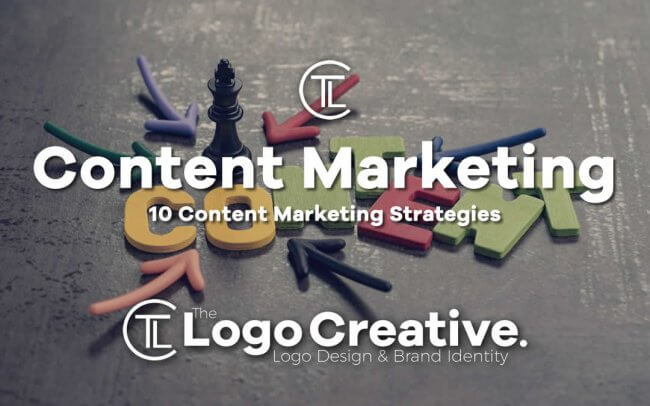The Web is flooded with tens of thousands of blog posts, giving marketers sleepless nights to stay ahead of the competitor. They need strategies to effectively market their content to ensure their websites get legitimate traffic. This blog post will discuss the top 10 lethal strategies and tips you need to follow as a blogger to bring in considerable traffic. In this article, we give you 10 Content Marketing Strategies.
Table of Contents
Develop fresh and crisp content, keeping your audience in mind
In the marketing sphere, everyone thinks that content is the king. We won’t deny that. But at present, influential content is the champion.
Remember, your blog has a fraction of seconds to attract viewers. Consider the articles or blogs you have read and podcasts or speeches you have listened to. With the initial exposure, people would be able to know whether they want to read, listen or view your content.
There is too much competition out there. If your content isn’t fresh or fails to capture their attention, you will simply lose. Nobody has enough time to spend on content that they find is tepid. Therefore, take your time to develop content that’s crisp and relevant to your audience.
Influential content for a financial firm may include — 7 reasons why you should start investing early; why financial planning is essential before you start a job; and how to attract clients as a broker.
You need to be a little edgy, but don’t go overboard with your content. Your content should challenge and entertain. It shouldn’t brag or boast though. Keep your homepage provocative enough so that your audience could remember it and tell others to visit it.
Harness the power of social media
There are more than 3.2 billion social media users around the world. It equates to about 42% of the total population. Increased social media usage has led to stiff competition among businesses. And, why not! It brings immense opportunities for businesses of all sizes.
From big to small, almost every company is eyeing on leveraging it for business growth. It’s also the best strategy for you to create engaging content that would help you drive traffic from different social channels plus boost your brand & identity.
But before you start harnessing the power of social media create some specific goals, know your audience and analyze your competitors on chosen channels. Post videos, images, articles, and blogs to spark the interest of your target audience.
Use multiple distribution channels
Only creating relevant content and posting it on your website isn’t enough. You need to distribute it across multiple channels to the right people and at the right time. An effective distribution plan helps you to build your relationships with your audience. Further, it helps in strengthening it too. As a result, your target audience takes the desired actions such as downloading your e-book, subscribing to your newsletters and more.
It all needs you to create a solid content marketing distribution plan. For that, you have to understand your goals, look into your audience’s behavior and find out the channels that they prefer. You also have to discover the type of content they like. If your content marketing plan is in place, move onto the distribution plan.
For distribution, you have to consider these three channels —
- Owned media: You can distribute your content on your own channels like your website, blog, and email newsletters. It also includes your social media pages.
- Earned media: It includes the distribution through third party sites such as retweets, guest posts, PRs and more.
- Paid media: Sometimes, you need quick results. For that, paid media is perfect for content distribution. It includes Google Ad and social media ad campaigns.
Avoid hard sell, post valuable content instead
Selling without a sales pitch is an art. Giving pushy or hard sales pitches often drive customers away. Post valuable content that addresses a problem. Create a convincing post that would help them believe that these are products or services that they need. Start blogging about a solution that your audience would be interested in. Mention your clients or customers that you have helped with your solution. Case studies and interview pieces are great for such purposes.
Let’s take an example — suppose you’re into plugin developments for WordPress sites. You have a plugin that helps people protect their site from hackers. What would you do?
Start with blog posts on “how to protect your WordPress site from hackers?” blog hacking is a real problem. People would show interest in this kind of content. Those who don’t know that it’s a major threat would also be interested to read it.
Once you have informed them about the problem, go ahead provide them with the solution.
By the end of the day, you will persuade your readers without a sales pitch. And, that’s a win for you and your customer both.
Determine who your target audience are
If you want your business to succeed, you need to understand your target audience. It’s not only necessary but also important. Once you have determined who your target audience is, you can easily introduce a new product and sell it. But how would you know your target audience?
Analyze your current audience. Find out why they buy from you. Check your competitors. Find out their current customers. Dig deeper into your product or service. Create a list of features it has. For example, you’re a graphic designer and you provide creative design services. The benefits include designing high-quality images for easy brand recognition.
Create a list of people who would need it. Most probably you are going to end up with businesses. For market research, pick specific demographics such as location, age, gender, occupation, marital status, ethnic background, and education level.
Create more targeted landing pages
Over 68% of B2B marketers use strategic landing pages to generate leads. A landing page is the first point of interaction between a brand and a customer through organic or paid search. If it’s flawed, your content marketing campaign marketing will fall flat.
These pages provide more specific details about your brand, products, and services. On top of that, they convince your potential audiences to convert. Don’t limit these pages to contact forms or a signup form. Instead, expand your concepts and turn them into a tool of lead generation and brand awareness. Make sure to add your logo design on landing pages for easy brand recognition.
Establish campaign goals
Do you publish content just because you have so? Stop this practice. Why? It’s because you are only wasting your time and resources. Every piece of content should have a purpose. Every piece of content that you produce has these reasons — to rank higher on the SERPs, earn links, educate the audience, and boost social engagement.
If you can’t understand the purpose of content and what it can do for your business, then you are not doing it the right way. Understand the reasons and establish goals based on that to make your campaign a success.
Optimize ‘A’ to ‘Z’
When kicking off a content marketing campaign, you need to optimize everything. Optimization is crucial for every written text on your website. And, for landing pages, it’s very, very important. You need to optimize your title tag, meta description, meta keywords, URLs, images, alt tags, image tags, content size, videos, headlines, and everything in between.
Optimization is a crucial part of content development and marketing of course. If it’s not optimized well, your campaign will not be successful.
Focus on facts, think tactically
The first thing that comes into mind when we think about content is creativity. We often overlook facts and data. In actuality, content marketing is a combination of both creativity and facts.
Your strategy needs to include facts that advocate your content is well-researched, right, and helpful. If you need a reason why here it is — according to 96% of top B2B content marketing performers, their customers consider their business as a trusted and credible source.
Do you know why? It’s because they are persistent in their content marketing efforts. They provide valuable information that their audiences need.
So, focus on including facts and then strategize to run your campaign. Choose infographic design for that.
Run A/B tests consistently
One of the major challenges marketers face in content marketing is getting their message to the right people and at the right time. At this point, some marketers think that their message would take care of itself. Well, that’s not the case.
You need to run A/B testing instead of plain guessing work. The idea is very simple — you create two different versions of your content and test each one of them to different audience base.
A/B testing frees you from confusions. It helps in deciding what’s best for your content marketing. You can collect the required data and gain insights.
Conclusion
That’s all folks. That’s all about content marketing strategies you need to focus on. Follow these tips and create a compelling campaign. If you found this article about 10 Content Marketing Strategies helpful please leave a comment below.
Useful Links & Great Deals
- The Equipment We Use & Recommend
- Quality Design Bundles
- Get 2 Months free Skillshare
- Get an Exclusive 20% off Logo Package Express
- Learn Logo Design Online
 Author Bio
Author Bio
Henny Kel is a designer and blogger currently working as a Digital marketing strategist & Brand Consultant at Designhill. He is very passionate about anything related to design and spends his time hidden behind a book or a screen reading about design.

